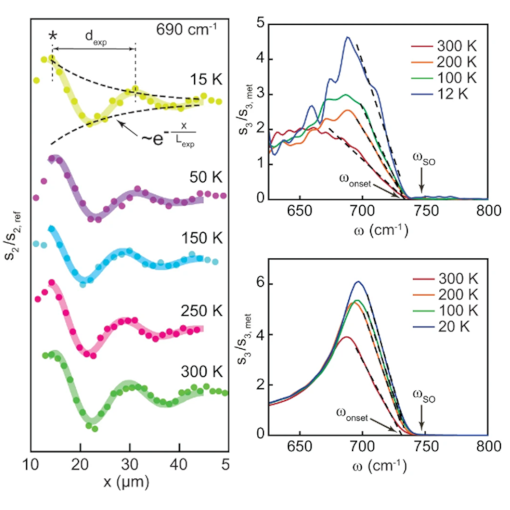
cryo-Tuning Surface Phonon-Polaritons
This research explores how adjusting the temperature and electrical properties affects surface phonon-polaritons in LaAlO3/SrTiO3 heterostructures, a promising area in nanophotonics. A significant contribution to this study is the use of nano-FTIR and s-SNOM techniques. Nano-FTIR allowed for detailed spectroscopic analysis at the nanoscale, enhancing the understanding of surface phonon-polaritons in these materials. The s-SNOM technique was pivotal in imaging and probing the properties of phonon-polaritons, providing crucial insights into their behavior under varying thermal and electrostatic conditions. This research underscores the potential of LaAlO3/SrTiO3 heterostructures in nanophotonic applications, bridging the gap between unconventional electronics and long-wavelength nanophotonics. The findings demonstrate the tunability of phonon-polariton properties, paving the way for advancements in infrared technology and material science.
This measurement was realized with the cryo-neaSCOPE+xs.
Further reading:
Zhou et al., Nature Communications 14, 7686 (2023)
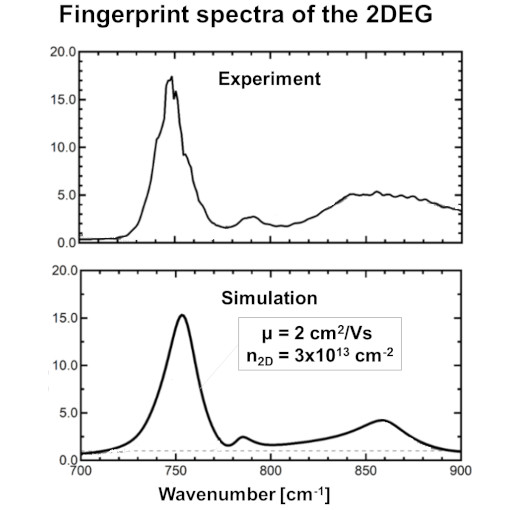
Fingerprint Cryogenic Nanoscopy
2D electron gases (2DEG) are promising confined electron systems for nanoelectronics and quantum technology. However, their sensitivity to defects can result in nanoscale inhomogeneities, posing a significant challenge. To address this issue, the authors utilized cryogenic nanoscopy with s-SNOM point spectroscopy at 8 K to record 2DEG fingerprint spectra in the previously inaccessible spectral window of 700 – 900 cm-1. Within this spectral region, three characteristic peaks were identified, each differently influenced by 2DEG carrier concentration and mobility. This allows for their disentanglement from spectroscopic measurements, providing a deeper understanding of the system's behavior. Notably, rising 2DEG mobility primarily affects the main fingerprint peak around 750 cm-1, with a saturation of the influence around µ = 80 cm2/Vs.
Overall, the presented cryogenic nanoscopy technique based on s-SNOM fingerprint method holds promise as a useful tool for studying confined correlated electron systems in nanoelectronics and quantum technology. Its applicability to other systems suggests broad potential impact in the field.
This measurement was realized with the cryo-neaSCOPE+xs.
Further reading:
Barnett et al. arxiv full text
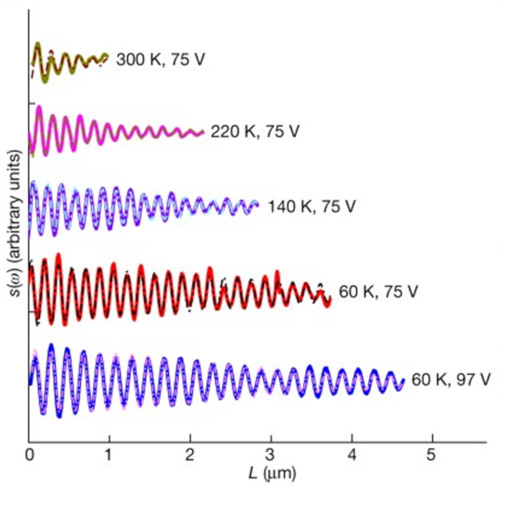
Cryogenic boost to graphene plasmonics
Scientists use graphene plasmon polaritons to squeeze the energy of long-wavelength radiation at the nanoscale and access several quantum effects with wide application range from fundamental research to industry (e.g. lasing, topological protection or dipole-forbidden absorption). The common tool for investigating and optimizing such processes is s-SNOM, however room temperature studies on this sample-system show strong plasmonic dissipation and prevents us to achieve highly confined modes of long plasmonic lifetimes. This study uses s-SNOM at cryogenic temperatures to bypass those shortcomings and to unravel the fundamental limits of propagating plasmon polaritons in high-mobility encapsulated graphene. Already at 60 °K, the propagation length can exceed 50 plasmonic wavelengths, thus setting a record for highly confined and tunable polariton modes. In this regime, the propagation of plasmon polaritons is primarily restricted by the dielectric losses of the encapsulated layers, with a minor contribution from electron–phonon interactions.
Cryogenic s-SNOM controls the losses in heterostructure engineering applications.
This measurement was realized with the cryo-neaSCOPE+xs.
Further reading:
Ni et al., Nature 557, 530-533 (2018)
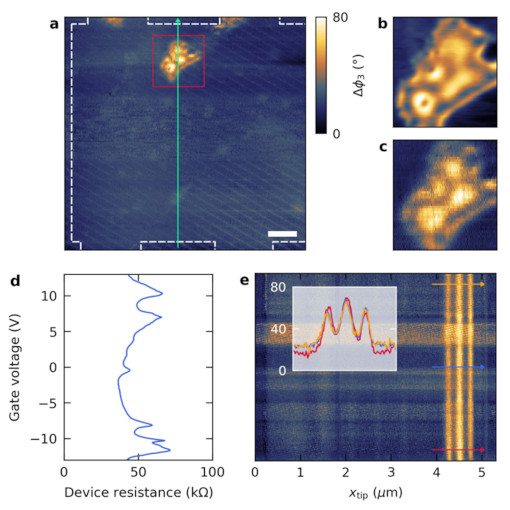
Excitations in Twisted Bilayer Graphene
Twisted bilayer graphene (TBG) can exhibit vastly different properties than those of single layers of graphene, especially when the two layers are rotated relative to each other by a small angle of approximately 1 degree. Investigating and probing these properties could be highly valuable, as it could ultimately enhance the current understanding of superconductivity and facilitate its use for the development of new devices. In this study s-SNOM investigation of TBG allows the spatial probing of interaction effects at the nanoscale and potentially elucidates the contribution of collective excitations to many-body ground states.
"As twisted graphene structures form a class of materials hosting many fascinating phenomena, we basically just have started the journey," says Prof. Koppens, the leader of the study. "We now aim to access the correlated states at cryogenic temperatures.
cryo s-SNOM technology sensitivity to the electronic properties of TBG could potentially point at the physical mechanisms of the superconducting and magnetic phenomena.
This measurement was realized with the cryo-neaSCOPE+xs.
Further reading:
News PHYS.ORG
Hesp et al., Nature Physics 17, 1162–1168 (2021)
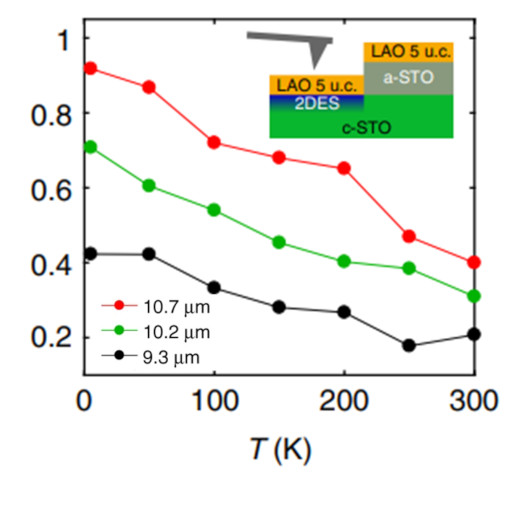
Conducting Oxide Interfaces
Probing the local transport properties of two-dimensional electron systems (2DES) confined at buried interfaces requires a non-invasive technique with a high spatial resolution operating in a broad temperature range. In this paper uses cryo s-SNOM as a tool for studying the conducting LaAlO3/SrTiO3 interface from room temperature down to 6º K. The s-SNOM signal, in particular its phase component, is highly sensitive to the transport properties of the electron system present at the interface.
cryo s-SNOM technology in combination with electrostatic gating provides novel application potential in phase separation and charge inhomogeneities due to ferroelectric domain walls, metal-insulator transitions and other emergent phenomena in a large family of 2D oxide interfaces.
This measurement was realized with the cryo-neaSCOPE+xs.
Further reading:
Luo et al., Nature Communications 10, 2774 (2019)
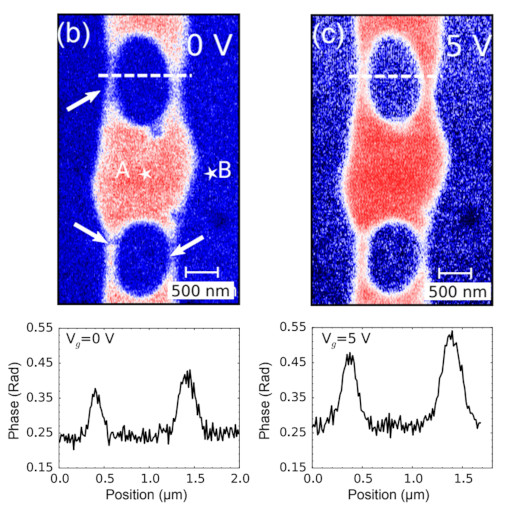
Electronic Transport in nano-Channels
Nanoscale channels realized at the conducting interface between LaAlO3 and SrTiO3 provide a perfect playground to explore the effect of dimensionality on the electronic properties of complex oxides. Here we compare the electric transport properties of devices realized using the AFM-writing technique and conventional photo-lithography. We find that the lateral size of the conducting paths has a strong effect on their transport behavior at low temperature. We observe a crossover from metallic to insulating regime occurring at about 50 K for channels narrower than 100 nm. The insulating upturn can be suppressed by the application of a positive backgate. We compare the behavior of nanometric constrictions in lithographically patterned channels with the result of model calculations and we conclude that the experimental observations are compatible with the physics of a quantum point contact.
cryo s-SNOM technology applies to oxide 2D nanoscale devices, confinement effects in future devices, and superconductivity.
This measurement was realized with the cryo-neaSCOPE+xs.
Further reading:
Boselli et al., Phys. Rev. B 103, 075431 (2021)


